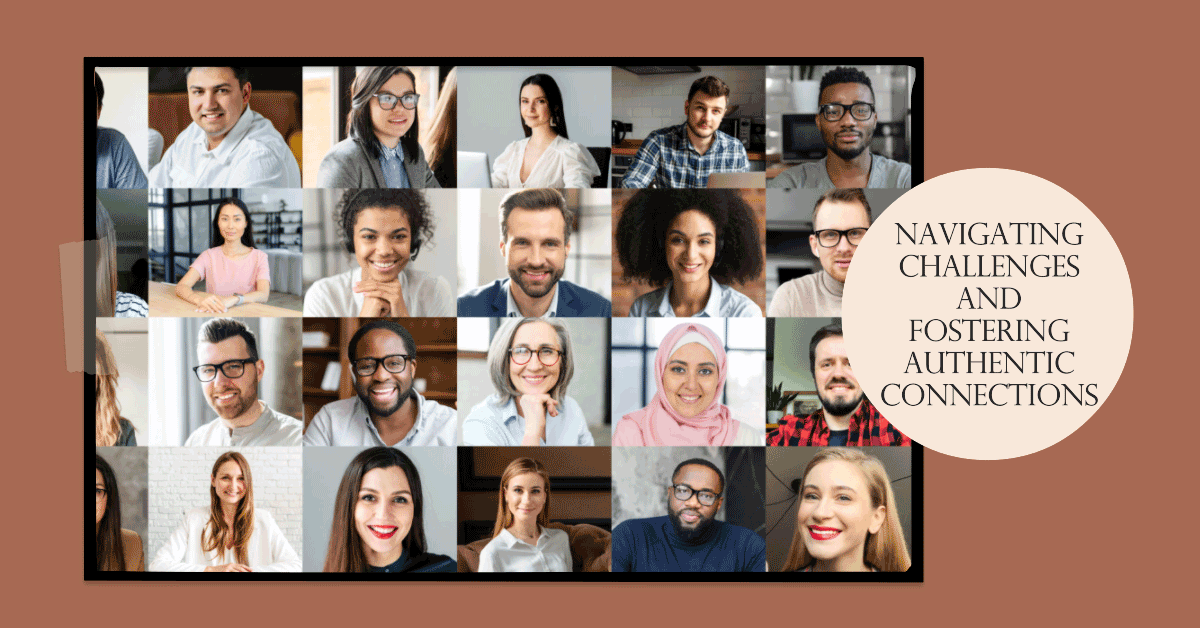Hey there, welcome! Today, we’re delving into the world of online communication and the challenges it presents. While connecting with others online offers numerous benefits, it’s important to acknowledge the potential drawbacks.
From misinterpreted tones to the lack of non-verbal cues and the unfortunate presence of online harassment, we’ll explore these issues together.
Additionally, we’ll discuss the impact of online interactions on mental health and social isolation.
So, let’s embark on this journey to unravel the challenges and discover ways to build genuine connections in a virtual environment!
Addressing Potential Drawbacks and Challenges
Let’s face it – online communication isn’t always a walk in the park. One challenge lies in the potential for misinterpretation.
Since text lacks a tone of voice, messages can be misconstrued. What may seem like a harmless comment can inadvertently come across as rude or sarcastic.
It’s important to approach online conversations with clarity, assume positive intent, and be open to asking for clarifications.
The Lack of Non-Verbal Cues: Oh, the beauty of non-verbal cues! They add depth and meaning to our conversations, but unfortunately, they’re absent online.
Without the ability to see facial expressions or hear the tone of voice, it becomes harder to gauge the true intent behind someone’s words.
Emoticons and emojis can help add some emotional context, but they aren’t foolproof. That’s why it’s crucial to ask questions for clarity and give others the benefit of the doubt.
The Potential for Online Harassment
Sadly, the online world isn’t always a safe space. Online harassment, trolling, and cyberbullying have become prevalent issues.
Behind the anonymity of screens, some individuals feel emboldened to engage in hurtful behavior. It’s essential to be aware of these risks and protect yourself.
Report any abusive behavior, block or mute individuals if necessary, and remember that you have the power to disengage from toxic conversations.
Exploring the Impact on Mental Health and Social Isolation
While online communication can connect us, it’s vital to recognize its potential impact on mental health and social isolation.
Spending excessive time online can lead to feelings of loneliness, as virtual interactions may not fulfill our need for genuine human connection.
It’s important to balance online and offline interactions, nurturing real-life relationships, and seeking meaningful connections beyond the digital realm.
The Challenge of Building Genuine Connections in a Virtual Environment
In the vast online landscape, building genuine connections can be a challenge. It’s easy to get lost in superficial interactions or superficially portray ourselves.
To foster authentic connections, it’s important to be yourself, share your interests and passions, and engage in conversations that go beyond small talk.
Embrace vulnerability and actively listen to others, as it paves the way for deeper connections.
Addressing Information Overload and Filtering Online Content
With the abundance of online content, it’s easy to become overwhelmed by information overload.
Filtering through vast amounts of content and conversations can be daunting.
Developing critical thinking skills and learning to discern reliable sources are essential. Focus on quality rather than quantity, and don’t hesitate to take breaks and prioritize your well-being.
Exploring Echo Chambers and Confirmation Bias
In online discussions, it’s essential to be mindful of echo chambers and confirmation bias.
Surrounding ourselves only with like-minded individuals limits our growth and understanding.
Embrace diversity of thought and seek out perspectives that challenge your own.
Engage in respectful debates and be open to changing your viewpoints based on new information.
Maintaining Privacy and Data Security
Privacy and data security are paramount in online conversations. Be cautious about the information you share and the platforms you use.
Familiarize yourself with privacy settings, choose strong passwords, and be mindful of phishing attempts.
Protecting your personal information is crucial for a safe online experience.
Addressing Online Scams and Fraudulent Activities
The online world is not immune to scams and fraudulent activities. Be vigilant and skeptical of suspicious requests or offers.
Protect yourself from phishing emails, online financial scams, and identity theft.
Remember, if something seems too good to be true, it probably is. Trust your instincts and prioritize your online safety.
Managing Time and Setting Boundaries
The constant connectivity of online conversations can be overwhelming. Managing your time and setting boundaries are crucial.
Allocate specific times for online interactions, prioritize self-care and offline activities, and be mindful of the impact of excessive screen time on your well-being.
Don’t hesitate to take breaks and step away from the digital world when needed.
The Potential for Online Addiction
Excessive reliance on virtual interactions can lead to online addiction and a lack of real-life social engagement.
It’s important to maintain a healthy balance between online and offline connections.
Nurture face-to-face relationships, engage in hobbies, and spend time in nature.
Remember that the online world is a tool to enhance our lives, but it shouldn’t replace genuine human connections.
Conclusion
As we’ve journeyed through the challenges and limitations of talking to people online, it’s evident that they exist. Misinterpretation, the lack of non-verbal cues, online harassment, and the impact on mental health and social isolation are significant concerns.
However, by practicing mindful communication, setting boundaries, and prioritizing our well-being, we can navigate these challenges and build authentic connections in the virtual world. Let’s create a digital environment where empathy, respect, and genuine connections thrive.

